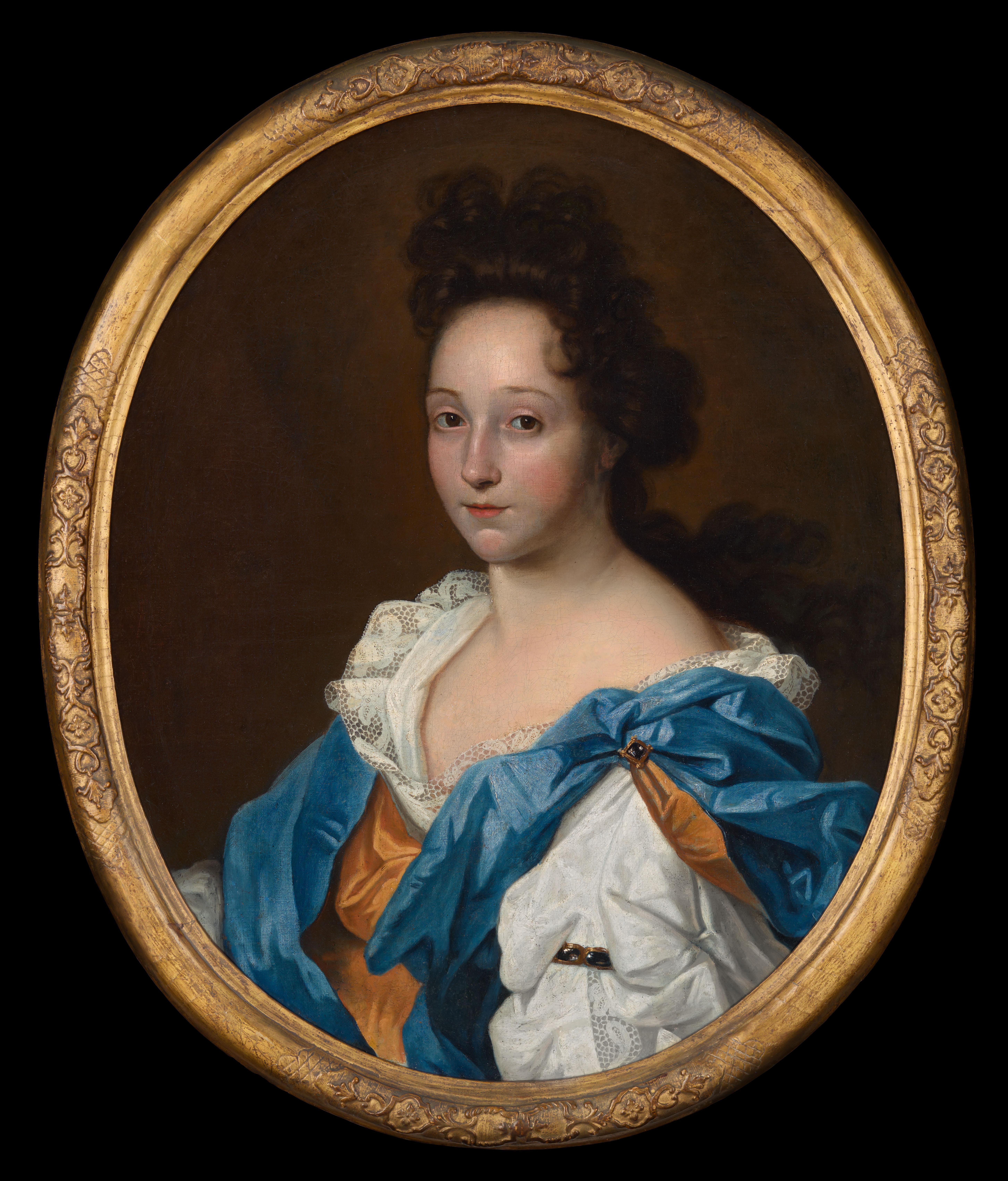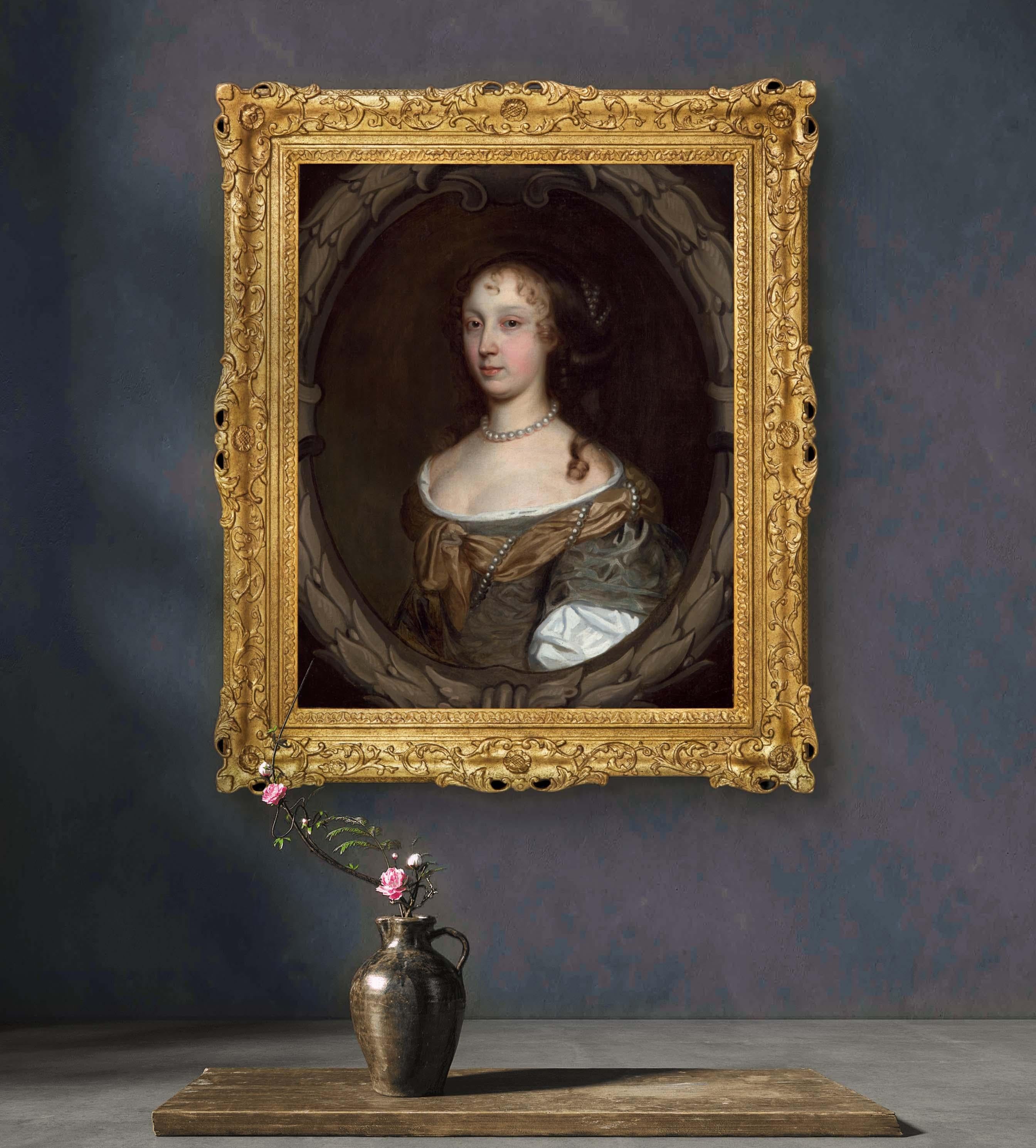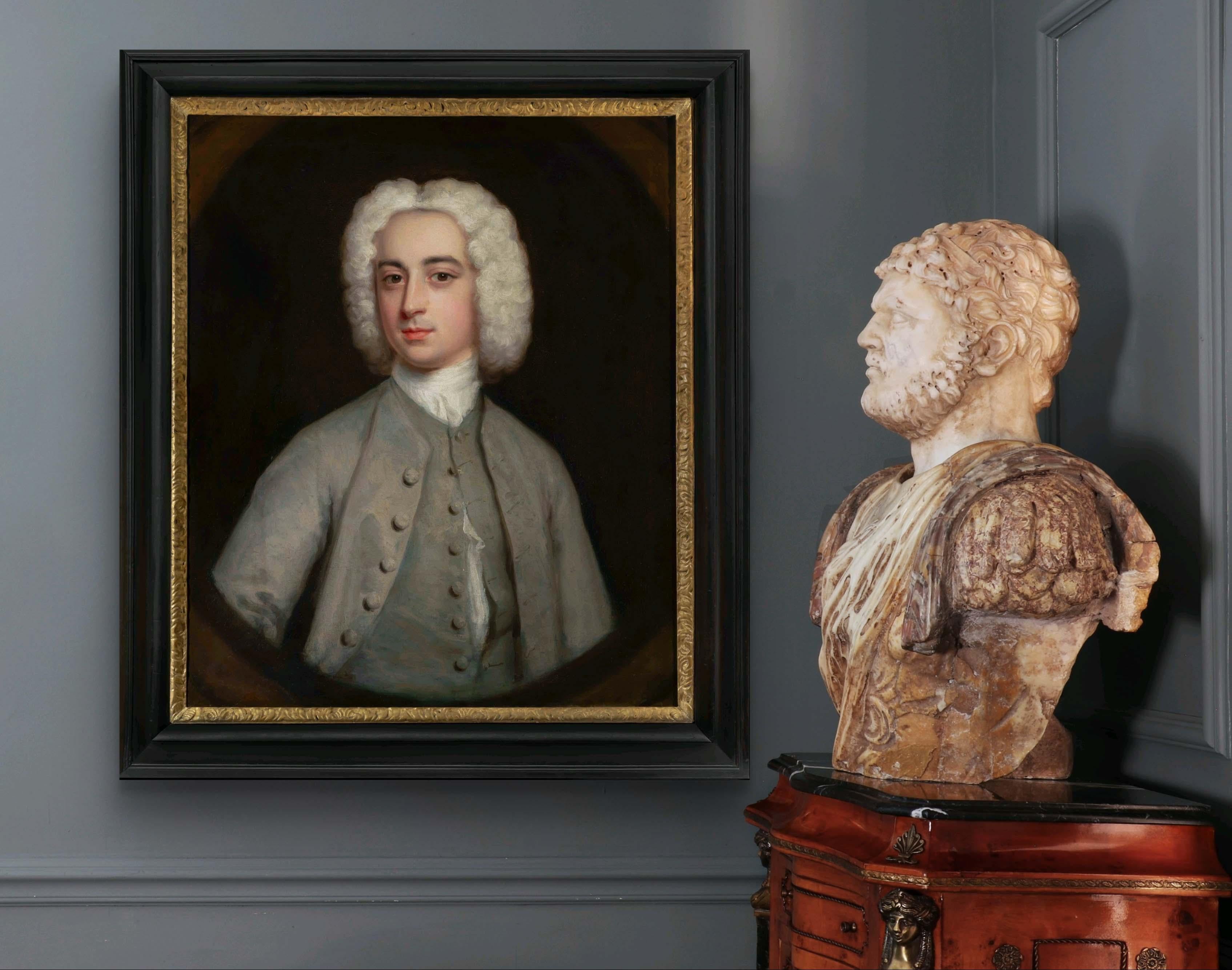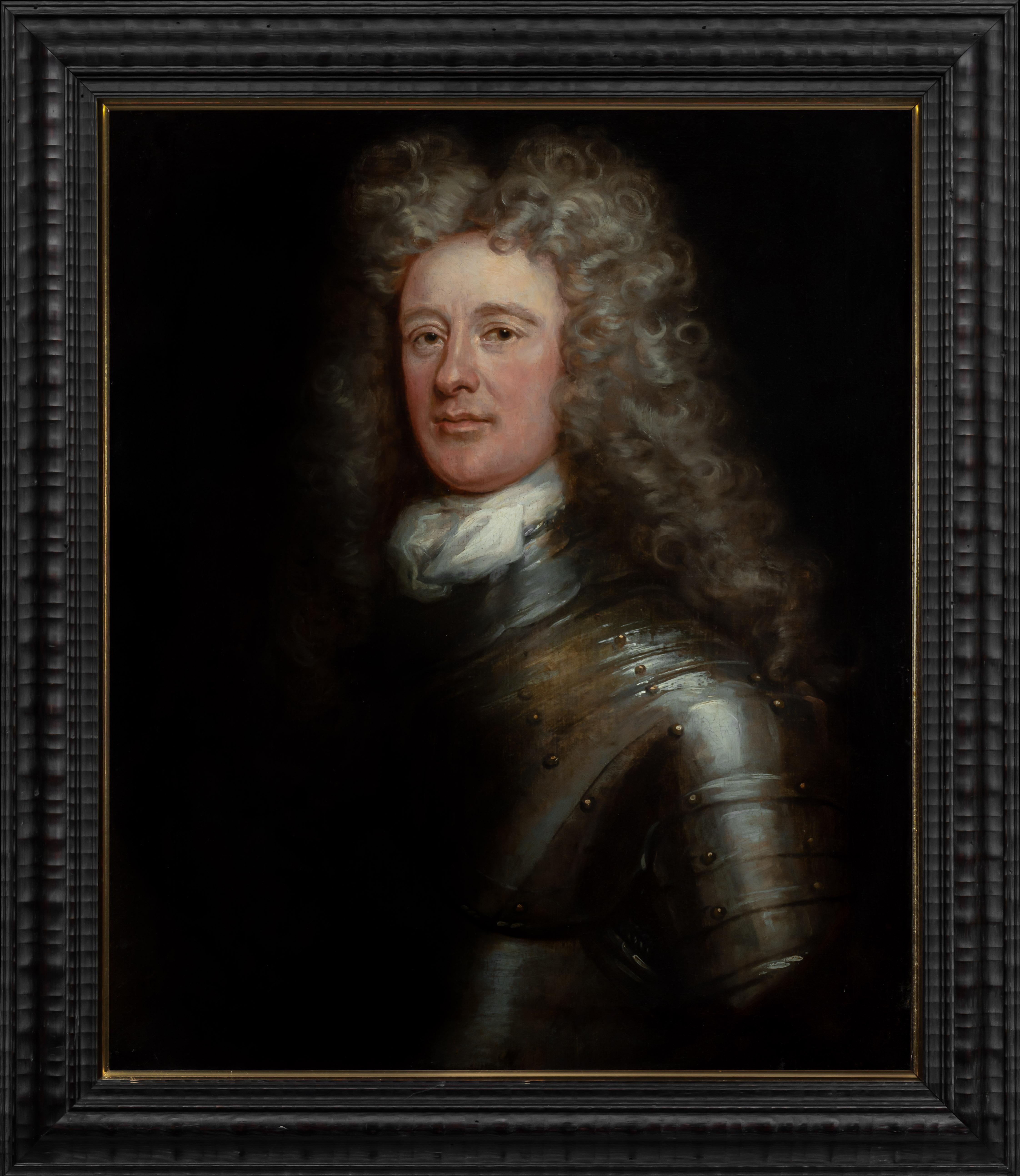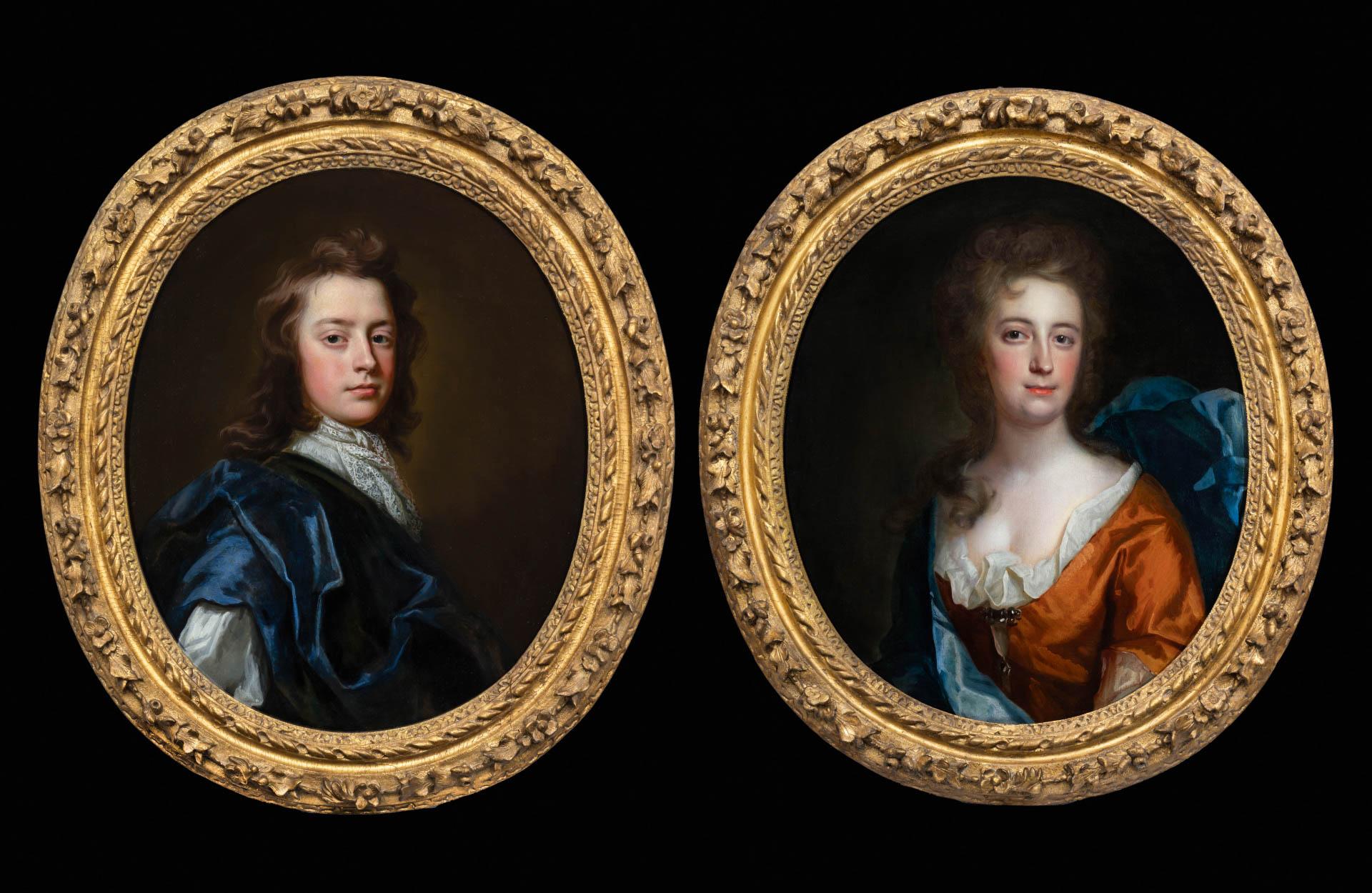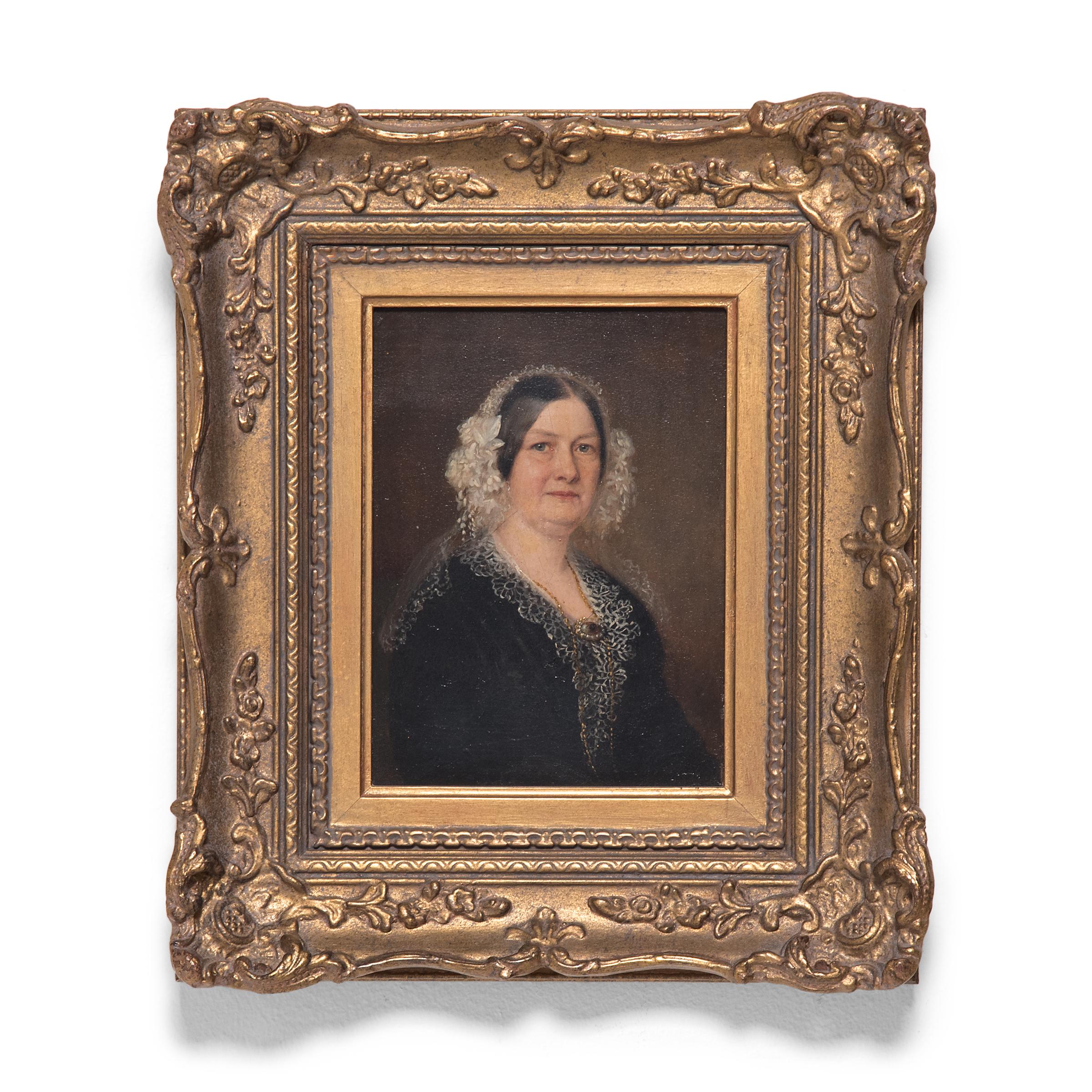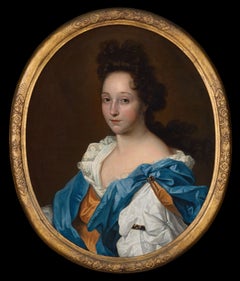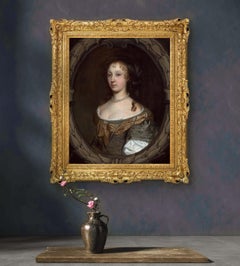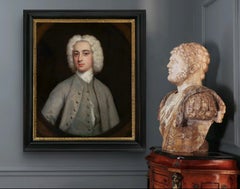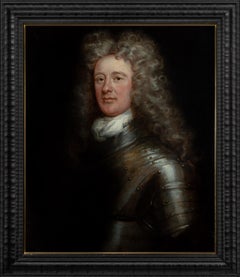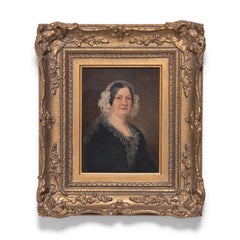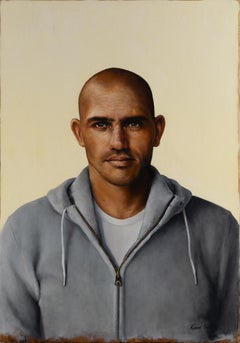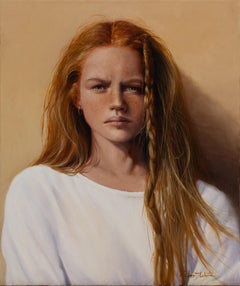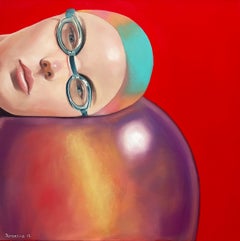Items Similar to Portrait of a Gentleman in Scarlet Robe Holding Flowers c.1675, Oil on canvas
Want more images or videos?
Request additional images or videos from the seller
1 of 9
Portrait of a Gentleman in Scarlet Robe Holding Flowers c.1675, Oil on canvascirca 1675
circa 1675
On Hold
$10,889.94
On Hold
£7,950
On Hold
€9,368.57
On Hold
CA$14,963.38
On Hold
A$16,746.84
On Hold
CHF 8,740.56
On Hold
MX$204,225.09
On Hold
NOK 111,867.30
On Hold
SEK 105,896.72
On Hold
DKK 69,916.43
Shipping
Retrieving quote...The 1stDibs Promise:
Authenticity Guarantee,
Money-Back Guarantee,
24-Hour Cancellation
About the Item
Titan Fine Art present this striking portrait, which was painted by one of the most talented artists working in England during the last half of the 17th century, John Greenhill. Greenhill was at the centre of the artistic scene in London and his achievements may have surpassed even that of Sir Peter Lely - England’s dominant artist at the time – had his life not been cut short when he was barely in his thirties. In fact, George Vertue claimed that Lely was jealous of Greenhill’s ability and that Greenhill was “the most excellent” painter.
Painted during the reign of Charles II, the artist has depicted the sitter wearing a scarlet robe over white lace cravat and cuffs, seated before a classical column and a moody evening sky. One arm is resting on a ledge and in his hand he holds two flowers. The drapery, the splendid wig of brown curls, and the setting with classical column exude a sense of wealth and privilege, scarlet has long been associated with authority. The attire and style of coiffure help to date the painting to circa 1675. The composition is almost identical to a portrait of the first Professor of Chemistry at the University of Oxford, and the first keeper of the Ashmolean Museum, Robert Plot (1640-1696) in the Bodleian Libraries, University of Oxford. The use of classical column and the landscape in the distance was often employed in English portraits of this period.
Held in an exquisite carved and gilded period frame.
John Greenhill was born at Salisbury, Wiltshire around 1642. He moved to London around 1662 and became a pupil of Sir Peter Lely, the dominant artist in England in the late seventeenth century, although it seems that he left fairly soon afterwards to establish his own practice. Of all the artists to emerge from the studio of Sir Peter Lely– John Greenhill was, as George Vertue noted, “the most excellent.” Vertue claimed that Lely was jealous of his pupil’s ability.
Greenhill was at the centre of the artistic scene in London after the Restoration, and he painted most of the leading actors of his generation. He was a pioneer of coloured chalk portrait drawings in England at that time, and his depictions of actors are considered to be amongst the most notable post-restoration portraits. He was commissioned to paint a number of leading figures of the court, including Anne, Duchess of York, and even the King. He carefully studied Vandyck's portraits, and George Vertue commented that he copied so closely Vandyck's portrait of "Thomas Killigrew and his dog" that it was difficult to know which was the original. Vertue also says that his progress excited Lely's jealousy.
Greenhill was at first industrious but a taste for poetry and drama, and living in Covent Garden in the vicinity of the theatres, led him to associate with many members of the free-living theatrical world, and he fell into "irregular habits" and this led to the end of his promising career. On 19 May 1676, while returning from the Vine Tavern (in Holborn) in a state of intoxication, he fell into the gutter in Long Acre, and was carried to his lodgings in Lincoln's Inn Fields, where he died the same night, barely into his thirties. He was buried in St Giles in the Fields church. He left a widow and family, to whom Lely gave an annuity.
All of our paintings have been carefully selected and have been assessed by a professional conservator prior to going on sale. Thus, they are all in good condition and can be hung and enjoyed immediately.
Measurements: Height 142cm, Width 117cm framed (Height 56”, Width 46” framed)
- Attributed to:John Greenhill (1644 - 1676)
- Creation Year:circa 1675
- Dimensions:Height: 55.12 in (140 cm)Width: 44.1 in (112 cm)Depth: 2.37 in (6 cm)
- Medium:
- Movement & Style:
- Period:
- Condition:This painting has passed a strict quality and condition assessment by a professional conservator prior to going on sale. It can be hung and enjoyed immediately.
- Gallery Location:London, GB
- Reference Number:1stDibs: LU1199114075192
About the Seller
5.0
Gold Seller
Premium sellers maintaining a 4.3+ rating and 24-hour response times
Established in 1998
1stDibs seller since 2019
44 sales on 1stDibs
Typical response time: 5 hours
- ShippingRetrieving quote...Shipping from: London, United Kingdom
- Return Policy
Authenticity Guarantee
In the unlikely event there’s an issue with an item’s authenticity, contact us within 1 year for a full refund. DetailsMoney-Back Guarantee
If your item is not as described, is damaged in transit, or does not arrive, contact us within 7 days for a full refund. Details24-Hour Cancellation
You have a 24-hour grace period in which to reconsider your purchase, with no questions asked.Vetted Professional Sellers
Our world-class sellers must adhere to strict standards for service and quality, maintaining the integrity of our listings.Price-Match Guarantee
If you find that a seller listed the same item for a lower price elsewhere, we’ll match it.Trusted Global Delivery
Our best-in-class carrier network provides specialized shipping options worldwide, including custom delivery.More From This Seller
View AllPortrait of a Lady in White Chemise, Russet & Blue Drapery c.1695, Oil Painting
By Harman Verelst
Located in London, GB
This lavish portrait, painted circa 1695, is an exquisite example of the type of portrait in vogue during the last quarter of the seventeenth century. It is evident that the artist ...
Category
17th Century Old Masters Portrait Paintings
Materials
Canvas, Oil
Portrait of a Lady in Green Dress & Pearl Jewellery c.1660 Painting John Wright
By John Michael Wright
Located in London, GB
In this exquisite work, painted around the time of the Great Fire of London in 1666, a beautiful young woman is wearing a green dress over a white chemise and a russet-coloured scarf...
Category
17th Century Old Masters Portrait Paintings
Materials
Canvas, Oil
Portrait of a Gentleman in Grey Coat & White Cravat, Oil on canvas Painting
Located in London, GB
This exquisite work, presented by Titan Fine Art, is by the notable artist Hans Hysing, who was a noteworthy painter in England; it is significant in its q...
Category
18th Century Old Masters Portrait Paintings
Materials
Canvas, Oil
Portrait of a Gentleman, David Erskine, 13th Laird of Dun, Wearing Armour c.1700
Located in London, GB
The gentleman in this exquisite oil on canvas portrait, presented by Titan Fine Art, is shown with the grandiloquence characteristic of the English School of painting. He is portray...
Category
17th Century Old Masters Portrait Paintings
Materials
Oil, Canvas
Portrait of Gentleman Blue & Cloak, Portrait of Lady, Fine Carved Gilded frames
Located in London, GB
Portrait of a Gentleman with Blue Cloak and Portrait of a Lady in Russet Dress c.1697
Thomas Murray (1663-1735)
These fascinating portraits are exquisite examples of portraiture in ...
Category
17th Century Old Masters Portrait Paintings
Materials
Oil, Canvas
Dutch Old Master Portrait of Maurits, Prince of Orange-Nassau, Oil on Panel
Located in London, GB
In 1607, the Delft city council decided to commission a portrait of Stadholder Maurits of Nassau for the town hall, with Michiel van Mierevelt as the chosen artist due to the passing...
Category
17th Century Old Masters Portrait Paintings
Materials
Oil, Wood Panel
You May Also Like
Oil Portrait of a Victorian Lady, c. 1850
Located in Chicago, IL
Painted in the 19th century, this exquisite miniature portrait wonderfully exemplifies realism in traditional oil painting. The small artwork is painted in the conventional portraiture style of the Old Masters, and achieves soft realism with fine brushwork and a subdued, neutral palette. The half length portrait depicts a fine Victorian woman dressed in all black with a delicate lace collar and bonnet. She wears a ruby broach...
Category
Mid-19th Century Old Masters More Art
Materials
Oil
Robert K. White "Kelly Slater" Oil on Canvas, Realist Portrait of Surf Legend
Located in Miami, FL
ROBERT KENNETH WHITE – "KELLY SLATER"
Oil on Canvas ⚜ Hand Signed Lower Right ⚜ Frameless Display
A PORTRAIT OF FOCUS, LEGACY, AND DEPTH
Rendered with near-photographic precision, ...
Category
2010s Realist Portrait Paintings
Materials
Canvas, Oil
Robert K. White "Girl with Red Hair" Signed Oil, Contemporary Realist Portrait
Located in Miami, FL
ROBERT KENNETH WHITE – "GIRL WITH RED HAIR"
Oil on Canvas ⚜ Hand Signed Lower Right ⚜ Frameless Display
A PORTRAIT STUDY OF STRENGTH AND INTROSPECTION
In this emotionally charged p...
Category
2010s Realist Portrait Paintings
Materials
Canvas, Oil
"The Shining 2" - Colorful Female Figurative Swimmer Portrait Painting
Located in West Hollywood, CA
This 36 inch square original oil painting on canvas is wired and ready to hang. The detail in this artwork is astounding. The crimson red tones make the female swimmers portrait real...
Category
2010s Contemporary Portrait Paintings
Materials
Canvas, Oil
"Army of Snorkelers" - Mirrored Female Swimmer Portrait Painting
Located in West Hollywood, CA
This large horizontal 37 inch high and 76 inch wide original oil painting on canvas is wired and ready to hang. The detail in this artwork is astounding. The crimson red tones make t...
Category
2010s Contemporary Portrait Paintings
Materials
Canvas, Oil
European Portrait of a Priest
Located in Milford, NH
A fine European portrait of a priest, oil on canvas, probably dating to the 17th or 18th century, unsigned, with original stretcher, minor surface losses and damage, craquelure, edge...
Category
17th Century Portrait Paintings
Materials
Canvas, Oil
More Ways To Browse
King George Ii
Cavalier Portrait
Jackie Kennedy Painting
James Peter Henry
18th Irish Painting
Bow Tie Painting
18th Century Oil Paintings For Sale
Red Baron
Portrait Xviii
Virgin Mary Portrait
Alice Smith Painting
Race Car Painting
18th Century Female Portraits
18th Century Scottish Painting
Carlos Salas
Male Old Master Portraits
Regal Oil Portrait
18th Century Of Female Portraits
